1 day Osaka itinerary
Did you know that Osaka is called Japan’s Kitchen? With a name like that, you won’t want to miss out on this city! Osaka is the perfect mix of historic landmarks, modern attractions and tons of culinary delights. A bustling metropolis located in the Kansai region, Osaka offers a plethora of experiences.
Whether you're a history nerd or a foodie, visiting Osaka as part of a bigger Japan travel or you are there for business, a single day in Osaka is worth spending your precious PTO.
This article will give plenty of this to do whether it is your first time in the city or you are a returning traveller.
A little about Osaka
Osaka, a bustling metropolis in Japan, boasts a rich history of over 1,500 years. Originally established as a small fishing village known as Naniwa, it flourished as a significant port city during the Asuka and Nara periods (6th to 8th centuries), serving as a vital hub for maritime trade and diplomatic relations with neighbouring Asian countries. However, it wasn't until the 16th century that Osaka truly became prominent under the rule of Toyotomi Hideyoshi, a powerful feudal lord who transformed the city into Japan's economic and cultural center. During this period, Osaka Castle was constructed, symbolizing the city's newfound influence and prosperity.
Throughout the Edo period (17th to 19th centuries), Osaka continued to thrive as a commercial hub and a key center for merchant activities, with its merchant quarters bustling with trade and innovation. However, Osaka also witnessed significant historical events, such as the Siege of Osaka in 1614-1615, which marked the end of the Toyotomi clan's dominance and solidified Tokugawa rule over Japan. Despite facing devastation from natural disasters and war, Osaka emerged as an industrial powerhouse during the Meiji era (late 19th to early 20th centuries), contributing significantly to Japan's modernization and economic growth. Today, Osaka is a great city mixing tradition and modernity.
Minami district in Oasaka - Photo by Richard Tao on Unsplash
A little Q&A before starting
Is one day enough in Osaka?
While one day in Osaka can provide a glimpse of the city's highlights, ideally, you would want more time to fully explore and appreciate all that Osaka has to offer. Probably 2 - 3 days will do. However, if you have just one day to spend in Osaka, you can still make the most of your time by focusing on key attractions. It all depends on how you want to balance your multi week Japan Itinerary.
I would advise against doing Universal Studios Japan and Osaka on the same day. The theme park will take you most of your day.
Is Osaka worth visiting?
Yes, Osaka is definitely worth visiting! As one of Japan's most dynamic and vibrant cities, Osaka offers a unique blend of modernity and tradition, along with a rich cultural heritage and a vibrant culinary scene. Osaka is renowned for its friendly and welcoming atmosphere, often referred to as the "Kitchen of Japan" due to its delicious street food, bustling markets, and diverse dining options.
Your Osaka 1 day itinerary
If you only have one day in Osaka, I would suggest these must-dos. If you continue reading, you will have the details of each attraction.
As you can see if you only have 24 hours in Osaka you can still fit a lot in.
Morning: Umeda Sky, Osaka Tenmangu & Osaka Castle
Lunch: Kuromon Ichiba Market
Afternoon: Namba Yasaka Shrine & Shinsekai
Late Afternoon & Evening: Dotonbori & America-mura
Osaka - Photo by Pichai Sodsai on Unsplash
Things to do in Osaka
You can pick and choose in this list that fits your preferences for your day trip to Osaka.
Osaka Castle
Osaka Castle is probably the city's most recognizable landmark. Today, the castle is a history museum where you can learn more about the important role that it played in unified Japan back in the 16th century. The castle was constructed in 1583 but has since been modified and restored several times due to damage from a number of fires and wars. WWII particularly devastated the castle.
If you are a history nerd, then you will like the museum displays and exhibitions about such as antique body armour, helmets and swords used by samurai warriors during battle.
Besides the museum, the castle’s main tower has great views over the city.
The castle is open daily from 9 am until 5 pm. While there is an entrance fee (600 yen per adult) to the museum, the Nishinomaru Garden is free for you to roam. The gardens have food vendors, perfect to try one of Osaka’s specialties.
Since this is the most popular landmark, I would suggest going early in the day to beat the crowds.
If you happen to be visiting during the cherry blossom season then this should be a prime spot to see the flowers. After all, the garden is home to 600 cherry trees. The castle often has events so you might check out their website to get all the info.
Minami/Dotonbori District
Probably the most iconic district of the city. This is where you will see all the neon lights and plenty of restaurants. The district with its canal was originally used for merchant transport, the sector is now lined on both sides with huge buildings covered with neon and LED advertising.
This is the entertainment district so it might be better to discover the hood at the end of your trip. This is where all the nightlife happens. The Shinsaibashi-suji Shopping Arcade is one of Osaka’s most famous and busiest streets. The street is a covered shopping arcade that is 600m long and is located right in the heart of the Dotonbori area. The covered shopping street is home to many international stores as well as cafes, restaurants, and izakaya.
Dotonbori Street is like the Times Square or the Dundas Square of Osaka, it is filled with neon lights and plenty of huge advertisements. The iconic Glico man is the most cherished sign which depicts a male athlete winning a race with his arms aloft as a sign of victory. The running man was installed in 1935 and has been altered only six times since. The candy company Glico - famous for their delicious Pockys- was marketing their candy to give a boost of energy, since the runner. Rumour has it that the first running man inspired by was famous Filipino runner, Fortunato Catalon (AKA Asia’s fastest man) and Shizo Kanaburi, Japan’s marathon running pioneer at that time.
Another iconic sign is the moving crab above the Kani Doraku restaurant on the main street in Minami district.
A fun activity to do in the area can be a Tombori River cruise, especially in the evening. You will get to see the city from another angle and will allow you to deepen your knowledge of the city. The cruises are approximately 20min so perfect for your compress visit.
If you want to stay away from all the neon lights, then you can go to the atmospheric Hozenji Yokocho. This little alleyway is pedestrian-only and leads to Hozenji Temple. The alleyway feels like a step back in time with Edo Period architecture. The Yokocho has around 60 restaurants, izakayas and bars lining.
The area is also home to Americamura, or America Village, an area which has been heavily influenced by American culture. If you like thrift stores, this can be the place for you to find unique clothes.
Kita/Umeda District
If you are taking the JR train, you arrive at the Kita/Umeda district. Located in the Kita ward, this is the shopping district characterized by its towering skyscrapers. One of the towers to visit is Umeda Sky Building a striking architectural landmark consisting of two towers connected by the "Floating Garden Observatory," offering panoramic views of Osaka cityscape. The observatory is free to visit and it is located on the 39th floor.
If shopping is your thing, then I would suggest going to the Hankyu Department Store which is connected to Osaka’s Umeda Station. This enormous department store is one of Japan’s largest, spanning 15 floors. You will find everything you are looking from clothes to bento boxes. However, if you are not a big shopping aficionado I might suggest skipping this stop since you only have a few hours in the city.
Tennoji District
The Shitennoji Temple is one of Japan’s oldest temples. The temple was established in the year 593 by Prince Shotoku. He was one of the main people that helped guide Buddhism into Japan. The temple houses the Prince’s shrine, the five-storied pagoda and the Gokuraku-Jodo Garden.
A short 13 min walk from the temple you will find the Tennoji Park itself often remains overlooked by tourists. This expansive park features scenic walking paths, tranquil ponds, and picturesque gardens, providing a peaceful oasis in the heart of the city.
In the same area, you have one of Osaka’s highest towers, Abeno Harukas. This 300-meter-tall skyscraper is the tallest building in Japan and is home to an observation deck, an art museum, the largest department store in Japan, and restaurants.
Shinsekai
Shinsekai roughly translates to “New World“. This district was developed in 1903 – in the middle of the National Industrial Exposition. The neighbourhood was somewhat inspired by France and Coney Island in New York. A weird mix, I know. The Tsutenkaku Tower is one of the district’s most iconic sights and was designed to be the city’s Eiffel Tower. There is an observation deck in the tower if you like pretty views from the top. However, I would suggest to only choose one in your itinerary.
Back in the early 1900’s the area was the hotspot and the place to be, work, live and party. Now, the area feels a little has been. However, many of the food and bar establishments have remained unchanged over the last century. This is the place to try many of the street foods with all the Osaka specialties (more on this later in the article.)
Hozen-ji Yokocho Temple
The most visited landmark of this temple is the Moss-Covered Buddha. The statue is of Fudo Myo-o, a Buddhist spirit that stands for discipline and morality. Instead of throwing a coin to the fountain, you throw water over the statue, which over many years, has resulted in its peculiar look, with moss growing over the surface.
Nipponbashi Den-Den Town
Den-Den Town is the electronics district, just like Akihabara in Tokyo. If you are into gadgets, video games and collectables, then this is the place for you. If you are not into this, then maybe I would suggest skipping it since you have limited time.
Namba Yasaka Jinja
Namba Yasaka Jinja, nestled amidst the bustling streets of Osaka's Namba district, is a serene Shinto shrine renowned for its striking lion-headed guardian deity. The shrine is a 12-meter tall lion-head-shaped building, a must-see.
Legend says the giant lion's head swallows any evil spirits surrounding its visitors. The shrine is very popular amongst students and business persons looking for success.
Beware that the shrine closes around 5 PM so make sure to plan accordingly. The Admission is free.
Museums
While you might not have time to visit museums during your visit, I thought that it was worth adding them if you are a museum fan or you are visiting during the rainy season.
Osaka is home to a variety of museums. The Osaka Museum of History provides a comprehensive overview of the city's rich past, showcasing exhibits on its cultural heritage, historical events, and architectural evolution. Meanwhile, the Osaka Science Museum offers interactive displays and hands-on activities focused on science and technology, making it an engaging destination for families and science enthusiasts alike.
For art enthusiasts, the National Museum of Art, Osaka, houses a diverse collection of contemporary and modern artworks by both Japanese and international artists. Additionally, the Osaka City Museum of Fine Arts features a wide range of traditional Japanese artworks, including paintings, ceramics, and sculptures, providing insight into Japan's artistic heritage.
Moreover, for those interested in learning about Osaka's culinary culture, the Instant Ramen Museum offers a unique and immersive experience, allowing visitors to explore the history and production process of instant noodles.
Tenmangu Shrine
Osaka Tenmangu, also known as Tenmangu Shrine, is a prominent Shinto shrine located in the Tenjinbashi area of Osaka. Dedicated to the deity Sugawara no Michizane, the shrine is revered as a place of learning and scholarship, making it a popular destination for students praying for academic success.
The shrine grounds feature beautiful architecture, including the main hall (honden), worship halls, and multiple auxiliary buildings. Visitors can explore the serene gardens, which are especially scenic during the plum blossom season in late winter and early spring.
Osaka Tenmangu also hosts various festivals throughout the year, including Tenjin Matsuri, one of Japan's three major festivals, celebrated in July with vibrant processions, fireworks, and traditional performances.
Still looking for recommendations?
Situated between the Dojima and Tosabori rivers, Nakanoshima Park offers a serene retreat from the urban landscape. Stroll along the riverside promenades, admire the seasonal flowers in the park's gardens, and visit historic landmarks such as the Nakanoshima Library and Osaka City Hall.
One of Japan's oldest Shinto shrines, Sumiyoshi Taisha is renowned for its unique architectural style and serene atmosphere. Take a moment to admire the distinctive vermillion-colored buildings, picturesque bridges, and tranquil ponds within the shrine grounds.
What to eat and where to eat in Osaka
As said before, Osaka is Japan’s kitchen and it is home to many delicious local specialties. Here are some of the Osaka street foods to delight your taste buds.
Takoyaki
If you have probably already tried the fried octopus balls. Originally from Osaka, the dish became a Japanese stable. The basic ingredients recipe is octopus, green onions, red pickled ginger and tenkasu, small pieces of deep-fried tempura dough. The dish is then topped with sauce, bonito flakes and green seaweed powder.
Aizuya restaurant claims to have invented this snack.
We just stopped at a little street vendor and it was delicious.
Okonomiyaki
Is another popular dish that you might have already tried, a Japanese-style savoury pancake. Okonomi (お好み) translates to ”however you like it”. The batter is made with cabbage, the most important ingredient used in this dish. You can then choose how to customize it by adding meat, cheese, mochi, seafood or other ingredients offered. The pancake is then topped with Okonomiyaki style sauce, mayonnaise, green seaweed powder and bonito flakes.
Mizuno is a Michelin bib restaurant and this is where we tried it. There is a bit of a line but I promise it is worth it. They have their own signature version called Mizuno-yaki which is filled with scallops, shrimp, pork, minced meat, squid and octopus.
Negiyaki
This was a new discovery for me. Negiyaki is a savoury Japanese pancake dish made with a batter of flour, water, eggs, and finely chopped green onions (negi), it's cooked on a hot griddle with fillings such as octopus, shrimp, or cabbage. Served with a sweet and savoury sauce and topped with bonito flakes and mayonnaise.
Kushikatsu
Kushikatsu consists of skewered and deep-fried pieces of meat, seafood, or vegetables. These skewers are coated in a light, crispy batter before being fried to golden perfection. Common ingredients for kushikatsu include beef, pork, chicken, and shrimp, as well as vegetables like mushrooms, eggplant, and lotus root. The dish is typically served with a tangy and slightly sweet dipping sauce made with Worcestershire sauce, often with a strict rule of no double-dipping.
Daruma restaurant is the birthplace of this local street snack.
Fugu
Also known as pufferfish or blowfish, is a delicacy in Japanese cuisine renowned for its potentially deadly poison. Despite its toxicity, skilled chefs meticulously prepare fugu by removing its poisonous organs, leaving only the safe and edible parts. Fugu is typically served as sashimi, thinly sliced and often arranged in an elegant presentation. It is prized for its delicate flavour and texture, often described as subtly sweet and slightly chewy.
We did not try this since at the time I wasn’t adventurous enough, now a few years later I would be ready to try it!
The restaurant Zuboraya specializes in this fish.
Yakiniku
Yakiniku is a popular Japanese barbecue style of cooking where thinly sliced pieces of meat, typically beef or pork, and sometimes vegetables are grilled over an open flame or hot charcoal grill. The term "yakiniku" translates to "grilled meat" in Japanese.
At a yakiniku restaurant, diners typically cook their own meat at their table on a grill set into the dining surface. The meat is usually marinated or seasoned with sauces like soy sauce, garlic, and sesame oil. Once cooked to desired doneness, the meat is often dipped in sauces before being eaten.
The dish has Korean roots and it is best to try it at Korea Town. Located in the Tsuruhashi area, Osaka's Koreatown offers an authentic taste of Korean cuisine. Explore the bustling streets lined with Korean barbecue restaurants, cozy eateries serving bibimbap and hot pot dishes, and specialty shops selling Korean snacks and ingredients.
Kuromon Ichiba Market
Known as "Osaka's Kitchen," Kuromon Ichiba Market is a must-visit destination for food enthusiasts. The market has been open for over 170 years. The market sells everything from fresh seafood to cheap clothing and homeware, but the delicious food stalls are the place to try Osaka's famous street food.
Explore the market's vibrant stalls selling fresh seafood, fruits, vegetables, and local delicacies. Crab is the most popular delicacy at Kuromon Market, be sure to try some of the giant spider crab legs on offer. I love crab so this was high into my things to try! If you don’t like crab, you can Indulge in sushi, sashimi, grilled seafood, and other mouthwatering treats prepared by skilled vendors.
If you like visiting markets, you also have Osaka Central Wholesale Market (Osaka Naniwa Kuromon Ichiba): Located near Namba Station, this market is a hidden gem where you can experience Osaka's culinary culture like a local. Sample a variety of fresh seafood, fruits, and snacks, and interact with vendors to learn about traditional ingredients and cooking techniques.
Takoyaki - Photo by Hardingferrent on Unsplash
Practical information
How to optimize your time in Osaka?
Plan your itinerary in advance. You might not like everything that we put on the list or you want to visit other things like the Osaka Aquarium. I would suggest that you research what you want to do in advance and map them out. Preferably choose attractions that are close to each other. However, the city has good public transit that will make it easy for you to go from one place to another.
You might want to consider doing an Osaka walking tour this way you get in-depth knowledge of the city and you are assured to do all the main attractions.
My biggest tips would be not to add too much to your itinerary and to stay flexible. Prioritize your top attractions and be willing to skip or postpone others if time becomes tight.
Since you only have one day in the city, you should begin your day as early as possible to maximize daylight hours and beat the crowds at popular attractions. Many sites, such as Osaka Castle and Kuromon Ichiba Market, open early, allowing you to explore them before the peak tourist hours.
Osaka is a city best explored on foot, so be sure to wear comfortable walking shoes to navigate its bustling streets and attractions comfortably.
Escalators
This practical tip might sound odd but you better know this in advance.
While you usually walk on the left and stand on the right side of the escalator in the rest of Japan, you walk on the right and stand on the left side only in Osaka. Confusing, I know!
GETTING AROUND
Osaka has an efficient and extensive public transportation network, including trains, subways, and buses. Purchase a one-day pass for unlimited rides on Osaka's subway and bus lines, which will save you time and money while navigating the city. The Osaka loop line provides easy access to key attractions, shopping districts, and transportation hubs.
How to get to Osaka
By Air: Osaka is served by two major airports: Kansai International Airport (KIX) and Osaka International Airport (Itami Airport - ITM). Kansai International Airport is the primary international gateway to the region, located on an artificial island in Osaka Bay. Itami Airport primarily handles domestic flights but also offers some international routes.
The JR Haruka Express is the quickest and most direct train into central Osaka, taking 30 minutes to reach Tennoji station and 50 minutes to arrive at Shin-Osaka station.
By Train: Osaka is a major transportation hub in Japan, and it's easily accessible by train. The Shinkansen (bullet train) connects Osaka with other major cities such as Tokyo, Kyoto, Hiroshima, and Fukuoka. Additionally, regular JR (Japan Railways) trains and private railway lines provide convenient access to Osaka from various parts of Japan. If you are doing a multi-city Japan itinerary, I would suggest you buy the Japan Rail Pass. You will probably arrive through the Osaka Station.
Best time to visit?
The best time to visit Osaka is Spring (March & April) for cherry blossom, and Fall (mid-October to mid-November) for fall foliage. However, be mindful that there will be a lot of crowds for the cherry blossom and prices are higher.
The worst time to visit Osaka is the summer months (July to September) because of the hot and humid weather and potential typhoons. Also, avoid Golden Week in early May due to the crowds. We, unfortunately, visited in mid-September and we had rain every day during our honeymoon in Japan, when it was not raining, it was very hot and humid. I would avoid this season.
CURRENCY
The currency is the Japanese yen, you can recognize it by the symbol: ¥; and the code: JPY; also abbreviated as JP¥. The Yen can be easily found abroad at the currency exchange office since it is the third most traded currency. Japan is mostly a cash-based society so you will have to bring lots of cash. Credit cards and debit are not exhaustively accepted in stores and restaurants.
POWER
The voltage in Japan is 100 Volt. Japanese electrical plugs and outlets are similar to North American ones and you will not need adapters if you are coming from North America.
TAP WATER
You can drink tap water so ditch your plastic bottle and fill your reusable bottle at the hotel.
SAFETY
Japan is generally considered a safe destination. It has low crime rates. However, as with any travel destination, it's important to take basic precautions.
How would you spend one day in Osaka? Share your thoughts with me by commenting below.
Do you like the content? Why not help me by buying me a virtual cup of tea?
PIN IT FOR LATER!
This guide gives you plenty of travel tips for your visit to Osaka for one day whether you are a first-time visitor or you have already visited the city. The article gives plenty of things to do, where to eat when to visit and a list of fun events. #Osaka #Japan #Asia #Travel #itinerary



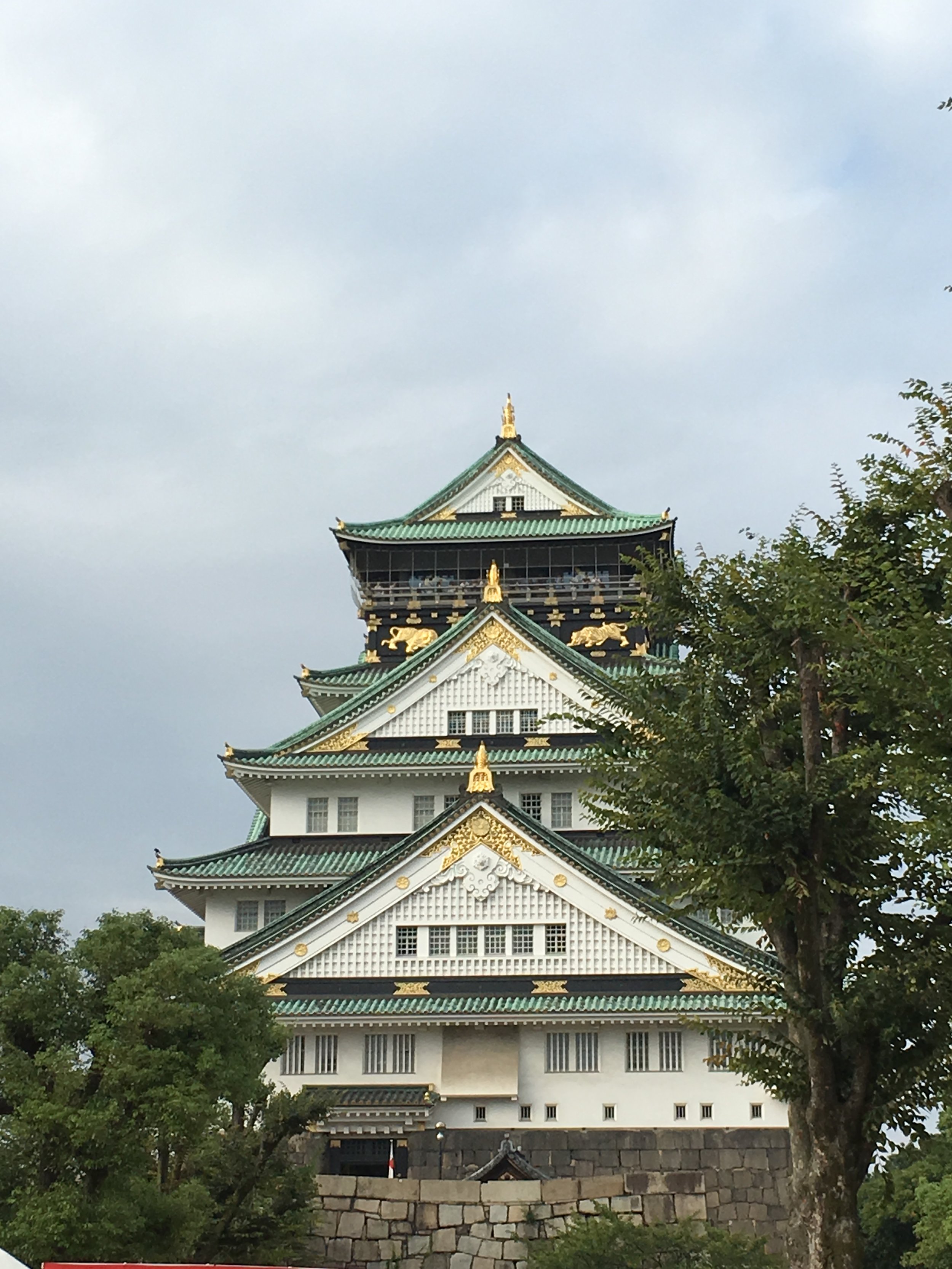

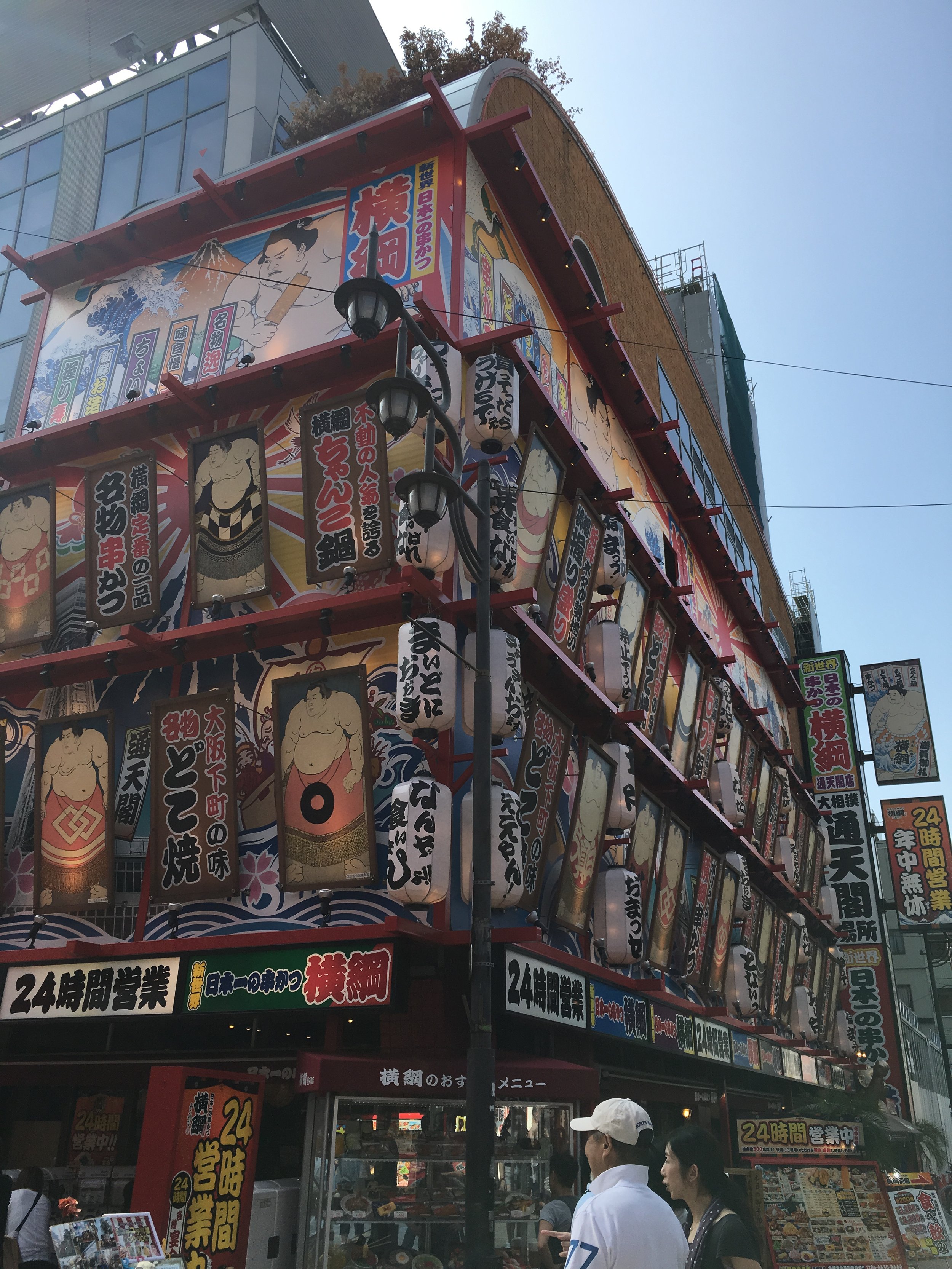
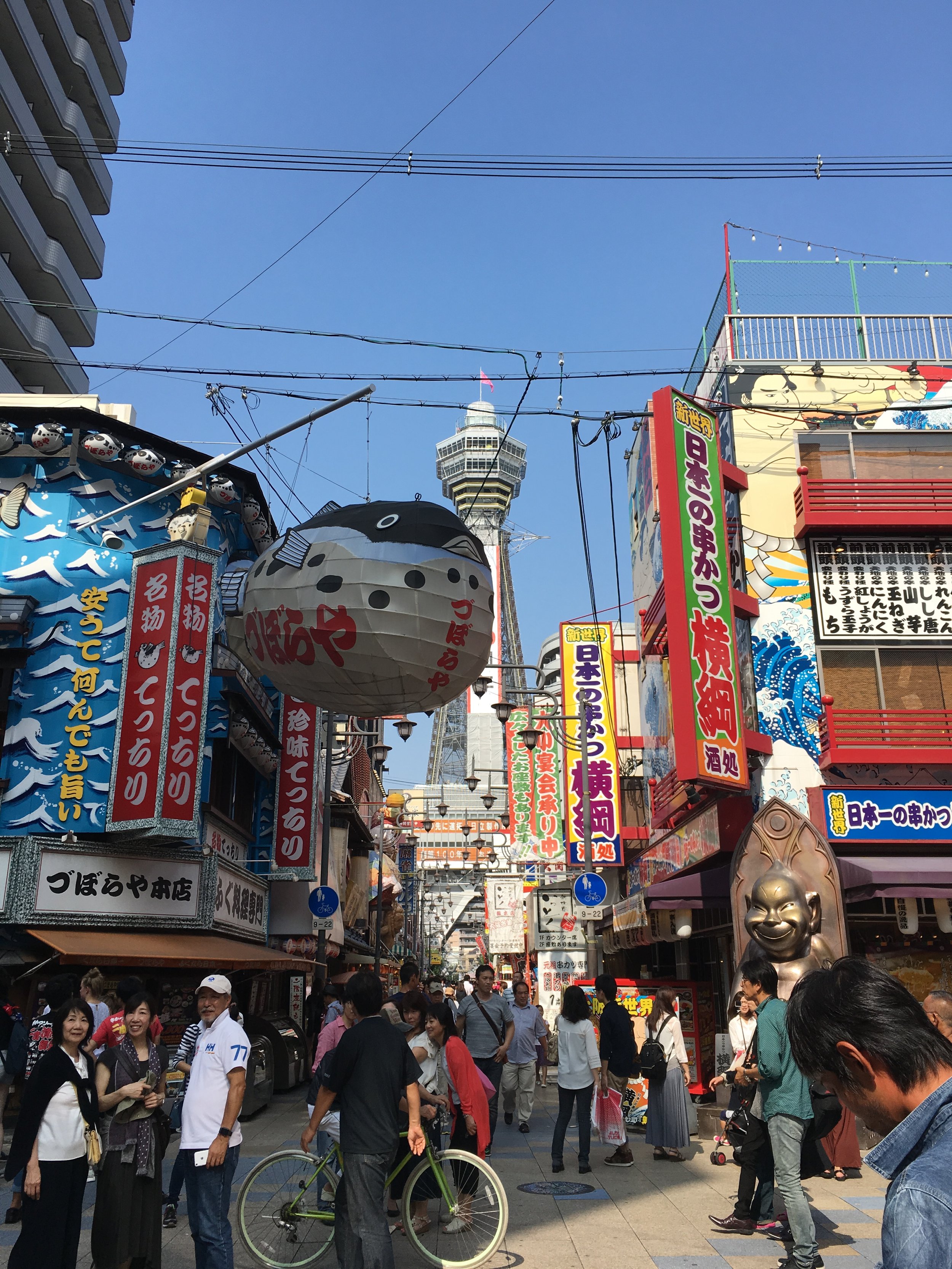
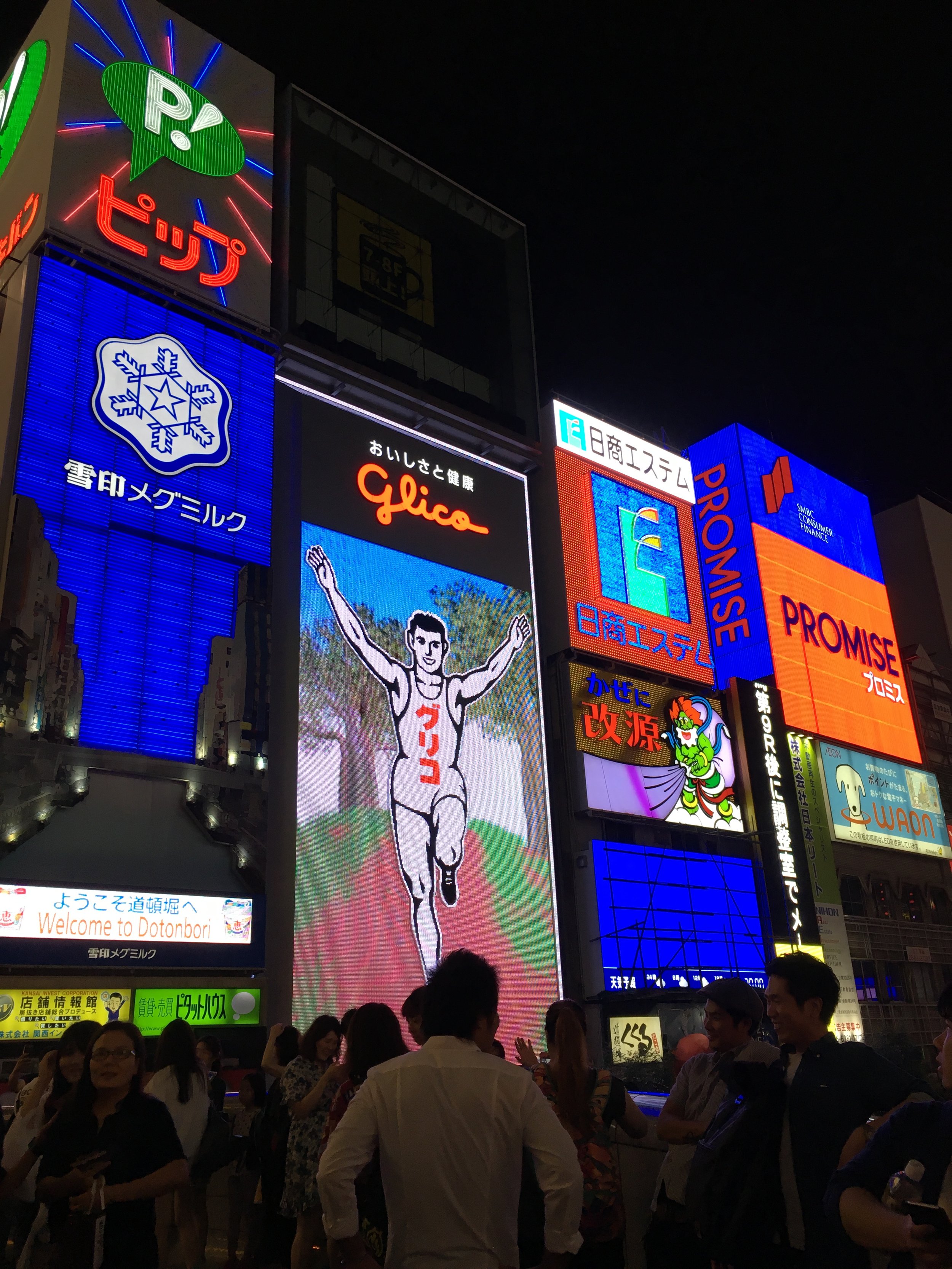
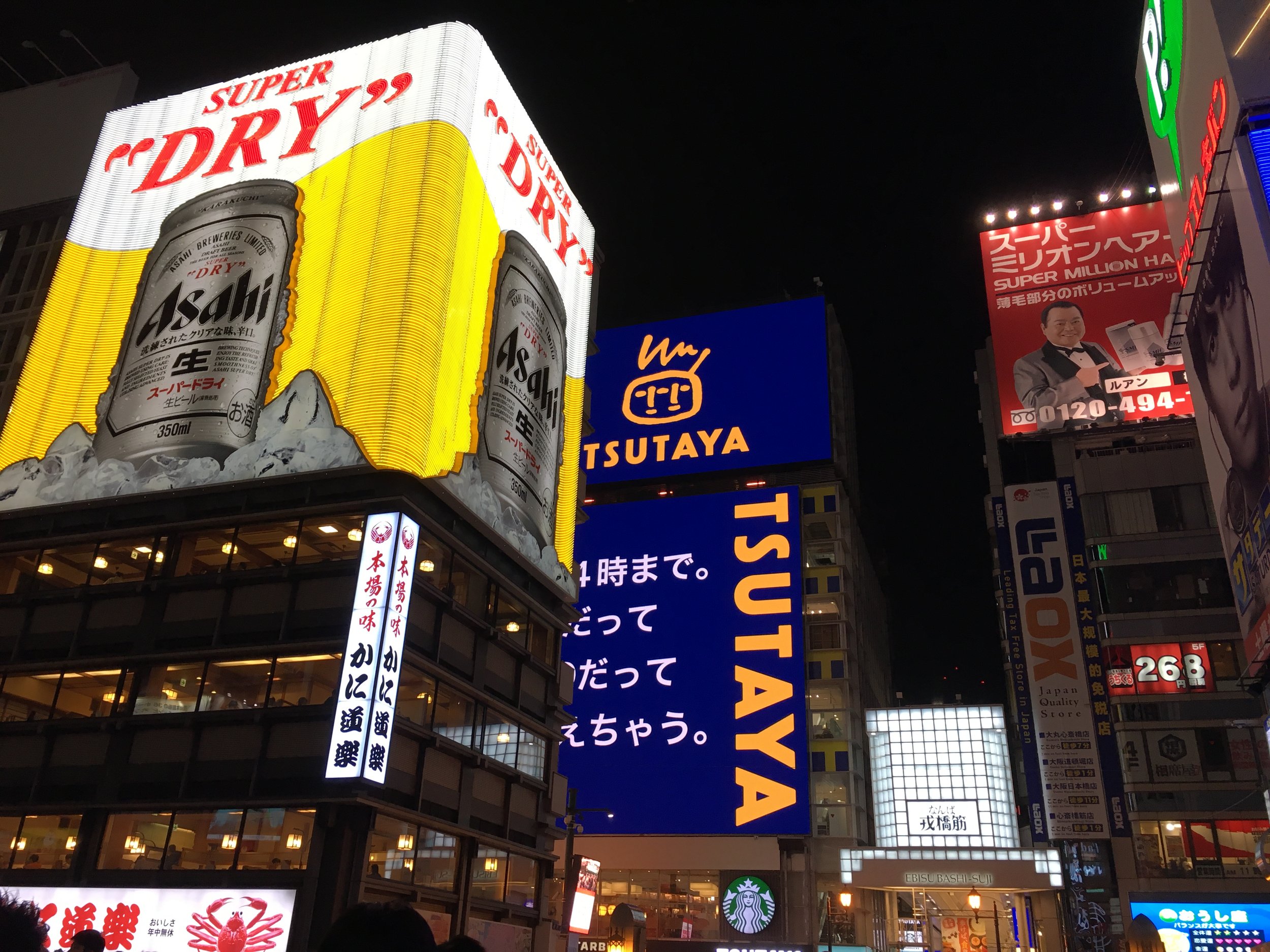



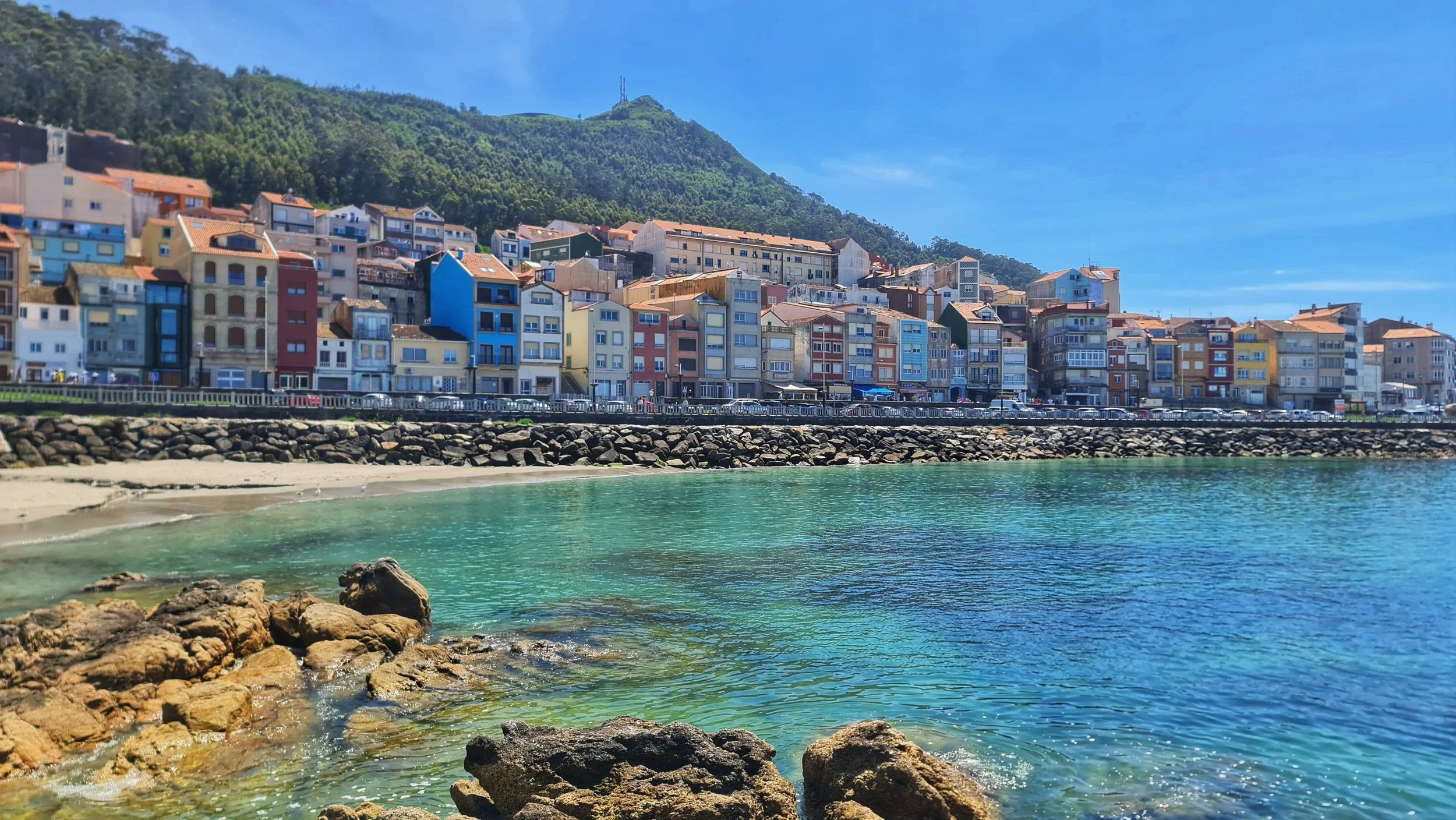
December is a magical month to travel, offering both festive holiday vibes and warm escapes. For winter lovers, snowy landscapes and Christmas markets bring cozy cheer. For those seeking sun, there are tropical beaches and vibrant cultures to explore. This guide highlights the best countries to visit in December, from snowy wonderlands to sunny retreats, each offering unforgettable experiences.